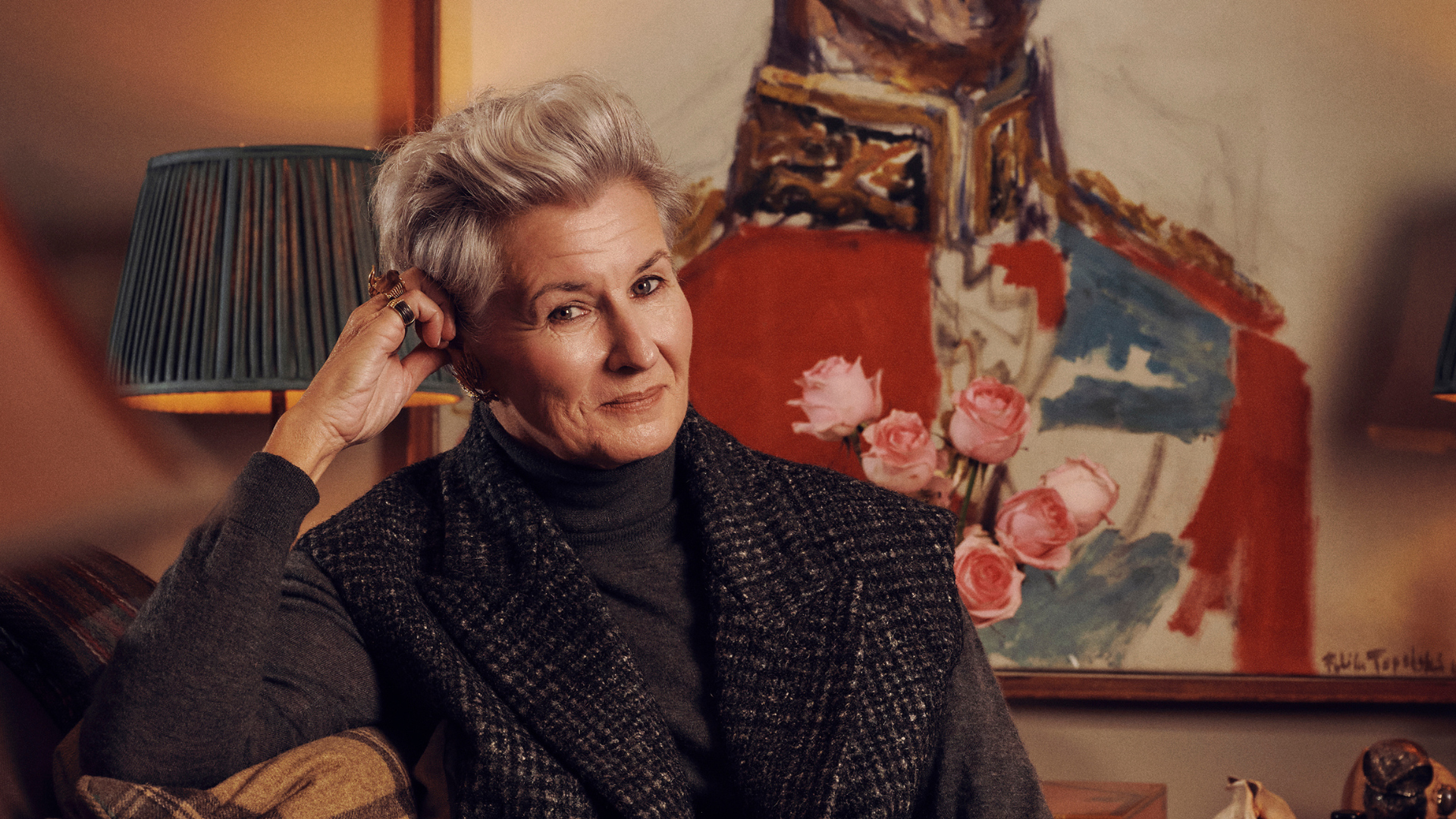Ava 4 Eva
In the perhaps apocryphal words of a Hollywood exec, ‘she couldn’t act, she didn’t talk, she was sensational’. By the end of her life — her passionate, audacious, valiant life — Ava Gardner was something else: transcendent.

Towards the end of her life, Ava Gardner attempted to sum it up, in characteristically pithy, from-the-hip fashion: “She made movies, she made out, and she made a fucking mess of her life, but she never made jam.” Let’s consider the evidence. The movies? Yes, she made approximately 60 of them, the majority in the 1940s and fifties, and, with certain notable exceptions, her startling, sloe-eyed, sultry, sensual, whiff-of-danger presence — she was dubbed ‘the original femme fatale’ — was the most memorable thing about them. The making out? Can’t argue with her there, with a tally of three husbands — Mickey Rooney, the bandleader Artie Shaw, and finally and most enduringly (at least for Ava) Frank Sinatra, along with a bevvy of lovers, including David Niven, John F. Kennedy, Robert Mitchum, Steve McQueen, Robert Taylor, and an abusive George C. Scott. The mess? It’s no secret that Gardner liked a drink or three — neat gin, tequila slammers, martinis and mai tais — and ended up banned from establishments as various as The Ritz in Madrid (for relieving herself in the lobby) and the St. Regis in New York (for pouring a cocktail down the owner’s trousers), but her determination to live life on her own unflinching terms looks positively proto-feminist from today’s perspective. And the jam? Well, when it comes to condiments, Gardner was obviously more of a Lady Marmalade — an altogether tarter, tangier proposition.


Gardner was justly celebrated for her candour and husky irreverence, but she once insisted that, “Although no one believes it, I am pathologically shy. I was a country girl and I still have a country girl’s rather simple, ordinary values.” She was born Ava Lavinia Gardner on Christmas Eve in 1922, the youngest of seven children; her father, Jonas, lost his North Carolina tobacco and cotton farm when she was two, and was forced to turn sharecropper, while her mother, Mary Elizabeth, ran a boarding house for ever- diminishing returns. The young Ava was often subject to the taunts of her classmates when she was forced to attend school in hand-me-downs. “Never mind new shoes,” she recalled, “I was often barefoot and would have been happy with any shoes at all.”
An older brother paid Gardner’s way to Atlantic Christian College in Wilson, North Carolina, where she intended to become, of all things, a stenographer. But on a visit to New York with her sister, the latter’s husband, a commercial photographer, took a number of portraits of her. One of them found its way to Metro-Goldwyn-Mayer, and a screen test was ordered — a silent one, to nullify the drawback of Gardner’s pronounced southern drawl. After viewing it, a studio executive allegedly uttered the immortal words: “She can’t act; she didn’t talk; she’s sensational. Get her out here.”






Gardner was duly summoned, and signed a seven- year contract with MGM, which came with all the then-standard trappings: acting classes, make-up and fashion tutorials, and, in Gardner’s case, intensive diction lessons. On her first day as a tongue-tied 18-year-old on the studio lot, she was taken to the set of the musical Babes on Broadway, where she encountered a 20-year-old Rooney in full drag — spangled bra, fruit-bowl turban — as the Brazilian bombshell Carmen Miranda. Rooney made a beeline for the befuddled ingenue — at least, as fast as his platform heels would allow. “Everything in me stopped,” he wrote in his memoir, I.E. — a not untypical reaction for many who would encounter the full-beam Ava over the years. “My heart. My breathing. My thinking.” (For her part, Gardner was a little, well, earthier in her assessment. “I was a virgin when I met him,” she said of Rooney, according to her biographer Lee Server. “But don’t let the little guy fool you. He knew every trick in the book.”)
The marriage fell apart within a year, owing to pressures both within (Rooney’s mother warned Gardner that he was a notorious womaniser: “He goes through the ladies like a hot knife though fudge”) and without (M.G.M., stringently protective of its properties, sent a press agent to accompany them on honeymoon). She then met Artie Shaw, newly returned from service in the second world war, at a Hollywood nightclub. He was duly smitten — “she was the most beautiful creature you ever saw” — but, again, the omens weren’t good: domineering and controlling, Shaw had a Pygmalion complex, plying Gardner with books on their honeymoon and insulting her intelligence in public. “It’s true that I’d only ever read Gone with the Wind before I came to Hollywood,” she said later. “But he had me so convinced I was completely stupid that I took an I.Q. test. And my I.Q. — well, it wasn’t off the charts, but it was high enough for my liking.” Again, she filed for divorce before a year was out, her nerves in shreds.




While her private life was in disarray, Gardner was finally landing film roles worthy of her incendiary charisma. Her breakthrough came in the 1946 noir classic The Killers, in which she played the double-crossing seductress of the doomed hero (Burt Lancaster, making his debut). It was adapted from a short story by Ernest Hemingway, who became a lifelong friend and drinking buddy (Gardner was one of the few who could match him shot for shot). Her only Oscar nomination came with 1953’s Mogambo, in which her feisty New York socialite spars with big-game hunter Clark Gable amid the torrid heat of the Kenyan jungle. And then there was 1954’s The Barefoot Contessa, which amplified elements of Gardner’s own story arc into myth: she plays a girl from the slums of Madrid who becomes a movie star but keeps running off to dance with the gypsies and ends up murdered when her aristocratic husband catches her sleeping with the chauffeur. “Her passion on screen is merely a magnification of her passion in life,” the critic Richard Brody wrote in The New Yorker of Gardner’s performance. “Like all the great stars, she doesn’t become her characters — she not only remains herself but makes them into herself.”
Off-screen, life was imitating art imitating life. Following her divorce from Shaw, she was pursued by Howard Hughes: “I was bewildered at his interest, until I realised that he dated every divorced star in Hollywood.” In Server’s biography, she says she never slept with Hughes, though he pursued her for the best part of two decades; the famous incident when she launched an onyx ashtray at his head was more likely a clash of political views than an attempt to repel any advances — Gardner, a lifelong left-leaning Democrat, couldn’t abide Hughes’s casual racism. Meanwhile, Gardner’s Mogambo co- star Grace Kelly, initially resistant to her charms — “Ava is such a mess it’s unbelievable” — was won over to the extent that, on a madcap trip the pair took to Rome, she accompanied Gardner when the latter insisted they visit a brothel. “By the end of the tour,” Server wrote, “the demure Grace Kelly had even found a boyfriend and had dragged him into the back seat of the taxi for some heavy necking.”


Gardner’s relationship with Sinatra was equally combustible from the start. They met in the fall of 1949, when a very drunk — and then still very married — Sinatra persuaded an equally merry Gardner to leave a Palm Springs party hosted by studio head Darryl Zanuck. They proceeded to the sleepy town of Indio, where Sinatra brought out two guns and began taking potshots at the streetlights. Gardner, not to be outdone, totalled the window of a hardware store (the armed cops who arrested them were later paid off by M.G.M.). Sinatra divorced his wife, Nancy, bringing down a rain of opprobrium from the studios, gossip columnists and the Catholic church, and they were married in 1951. It was a bruising kind of amour fou: Sinatra once threw a douche bag full of water at Gardner and herpal Lana Turner; she had two abortions during the course of the relationship; and once, when Gardner was asked why she stayed with the 119-pound Sinatra, she replied, “Well, I’ll tell you — 19 pounds is cock”. But she showed real support for Sinatra, using her influence to win him the role in 1953’s From Here to Eternity that resurrected his acting and singing careers, and they remained close after their divorce in 1957. In His Way, Kitty Kelley’s 1986 biography of Sinatra, Gardner is quoted as saying: “You start with love, or what you think is love, and then comes the work. I guess you have to be mature and grown-up to know how to work at it.






Photo Credits: Getty Images





